




CHOOSING THE RIGHT
TYPE OF BRACES
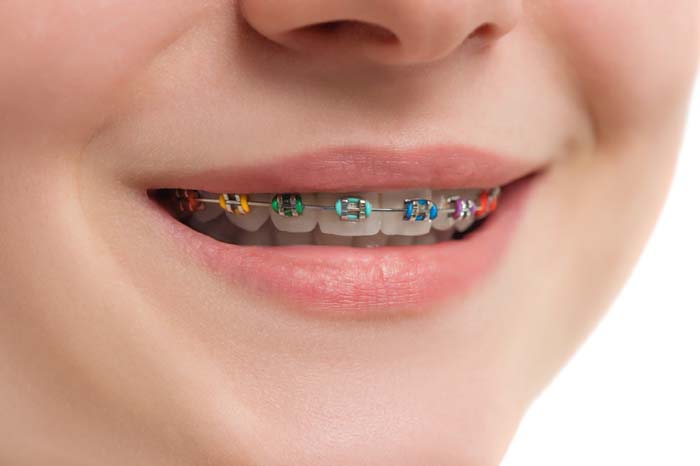
TRADITIONAL BRACES
Traditional metal braces are the most common type, and are more comfortable today than ever before. Made of high-grade stainless steel, they straighten your teeth using metal brackets and archwires. With metal braces, you have the option of adding colored elastics (rubber bands) for a more unique and colorful smile.

SELF-LIGATING BRACES
At Gersch Orthodontics we use the most advanced braces technology available. Our self-ligating braces, DAMON System and EMPOWER System, are made from the same high-grade stainless steel material as traditional braces, however, they use a specialized clip to hold the archwire in place-eliminating the need for elastic ties. The specialized clip helps reduce the amount of pressure and friction on the tooth, which means more efficient tooth movement, fewer adjustments, fewer appointments and faster results. The use of gentle, low-friction force also means less discomfort for you! Although self-ligating brackets replace the need for elastic ties-which can make brushing and cleaning your braces easier-you can still have the option of adding colored elastics for a more unique and colorful smile!

CLEAR (CERAMIC) BRACES
Ceramic braces are just as effective as metal braces, but are less visible on your teeth than metal braces. Ceramic braces provide all the benefits of our self-ligating metal braces, with a discrete look that patients love. They are perfect for older teens and adults that want an aesthetic treatment option but don’t want the extra hassle of removable aligners and the responsibility of wear time with clear aligner systems like Invisalign®.
Although they are visually less prominent, the ceramic material can be brittle and require more attention to daily oral hygiene! While most patients in ceramic braces choose them for their discrete look…you can still choose to add colored elastic ties for a unique, fun look that really pops!

LINGUAL BRACES (INBRACE)
Lingual braces are hidden behind the teeth and are therefore “invisible” when you smile. They are 100% customized to match the shape of your teeth; the metal appliances are created uniquely for you. Lingual braces are a great cosmetic alternative to traditional braces for straightening your teeth. To make your lingual braces, we’ll start by taking a digital impression of your teeth and sending it to a dental laboratory. They’ll use the impression to create customized brackets and wires that are then cemented onto the back of your teeth. Since the brackets are positioned behind the teeth, lingual braces may not be an option for certain malocclusions and bites.
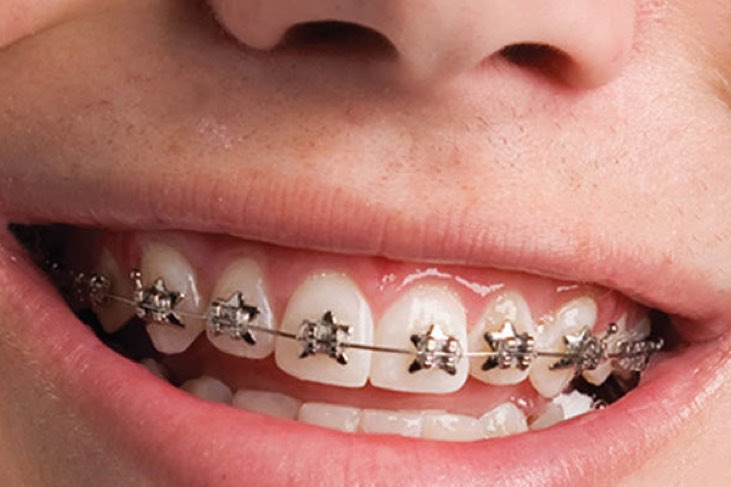
WILDSMILES
WildSmiles are a fun alternative to conventional braces–designed to take your orthodontic smile from mild to wild! WildSmiles are specially designed brackets that come in a variety of fun shapes including: Stars, Hearts, Soccer balls, Footballs, Flowers, and Super-Diamonds®. Designed to make your orthodontic experience fun, WildSmiles are a unique alternative to traditional braces. WildSmiles are low-profile, stainless steel braces that work just like traditional braces. But with WildSmiles, you can choose your favorite shape and mix the brackets with colored elastics for added individuality and a completely custom experience.Use this cool design tool to create your personal smile, and let us know which shape is right for you!
CARING FOR YOUR BRACES & OTHER EMERGENCIES
HOW LONG WILL I NEED BRACES?
The amount of time it takes to treat your smile with braces depends on two key factors:
- What needs correction — The amount of treatment needed to correct a problem will determine how long the process takes. Different patients react to treatments differently. While it may take one patient only 12 months to complete treatment, it may take another patient 24 months. Treatment times can vary depending on how quickly your body responds and how much work is needed to give you the show-stopping smile you expect.
- YOU! — Your willingness to use the appliances and elastics your orthodontist gives you plays a major role in the length of time it takes to complete your treatment. Always remember to take care of your braces and appliances; this truly will help make your treatment shorter!
CARING FOR YOUR APPLIANCES
When you have braces, it’s very important to brush and floss regularly in order to keep your teeth and gums healthy throughout your orthodontic treatment. If you need help choosing the right toothbrush, toothpaste, and dental floss, please ask us and we can help you choose the right products for your teeth and your appliance.
Brushing
- Brush after every meal with a fluoride toothpaste and a soft, rounded-bristle toothbrush that’s in good condition.
- Start brushing on the upper right. Brush above and below the braces using a small circular motion. Slowly work your brush toward the front teeth and over to the left side. Then brush the insides and biting surfaces. Take your time. Spend at least 10 second on each tooth.
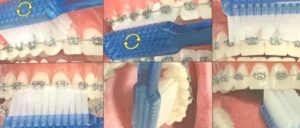
- Starting on the right side, brush the outside of the lower teeth. Using a circular brushing motion, brush above and below the braces until the teeth and braces are sparkling clean. Work the brush slowly toward the front and left side. Then brush the insides and tops of the teeth. Take your time. Spend at least 10 seconds on each tooth.
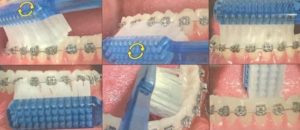
- Brush your gums gently and thoroughly. Brush your tongue and the roof of your mouth too.
- Rinse thoroughly after brushing.
- You can use an interproximal brush to more completely remove plaque and food particles near your brackets
Flossing
- Floss every night before you go to bed. That way, you won’t feel rushed.
Take your time and floss between each tooth. - When flossing with braces on, use a floss threader or special orthodontic floss to thread the floss behind the wire.
- Pass floss threader under the archwire
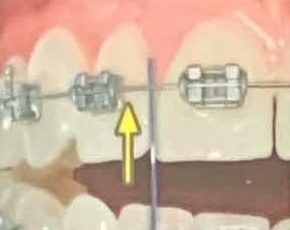
- Pull up on the threader to get floss behind the archwire

- Gently clean sides of teeth and under gums with an up-and-down motion
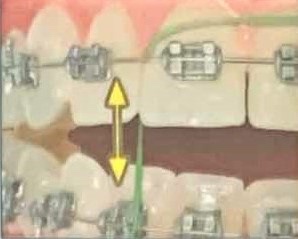
EATING WITH BRACES
You will need to take special care to avoid any foods that could damage your new appliances. In general, try to cut food into smaller pieces and avoid biting into hard or sticky foods that can break or damage the braces:
- Skip the hard candy and gummy food. This includes caramel, chewing gum, hard gum, gummy bears, lollipops, jolly ranchers and jawbreakers.
- Try not to eat ice. It can loosen the cement that bonds the braces to your teeth.
- Try to drink less soda pop and drinks with sugar. Sugar promotes plaque, which causes cavities and bad breath. Try drinking milk, water and low-sugar juices.
- Pass on eating nuts or popcorn. Instead, try eating treats like soft cookies, muffins, crackers, ice cream, pudding or Jell-O!
- Chewing on pens, pencils and fingernails can damage your braces, It only takes one bite to knock’em off!
- Avoid hard pizza crusts and hard bagels. Stick to softer breads and grains, such as, soft tortillas, pasta, soft cooked rice, pancakes and muffins.
- Skip raw foods or foods that require biting into, such as carrots, apples and corn-on-the cob. Eat cooked vegetables and sliced or softer fruits instead (and try to cut the corn off the cob!)
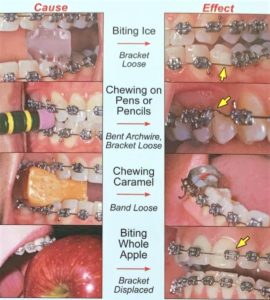
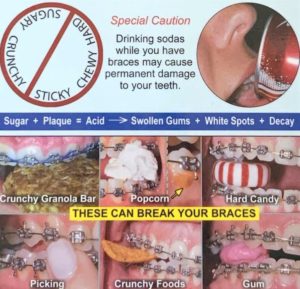
PLAYING SPORTS WITH BRACES
You can still play sports and perform even while undergoing orthodontic treatment! If you play sports, it’s recommended you wear a mouthguard to protect your teeth and your appliances. Make sure your mouthguard is NOT the boil and bite kind. This is because a boil and bite mouthguard won’t fit over your braces once your teeth start moving! Look for a mouthguard specifically designed for Orthodontic Treatment. Let our office know if you need help finding the right mouthguard for the best protection.
BRACES EMERGENCIES
- Soreness and discomfort: When you first get your braces, or have an adjustment, you may notice that your teeth and mouth feel a little tender or sore. This is perfectly normal, and we promise your mouth will not be sore forever! To relieve the pain, we recommend dissolving one teaspoon of salt in eight ounces of lukewarm water. Swish and gargle this solution in your mouth for just a couple of minutes, but do not swallow the salt water. If the pain is more severe and does not go away after rinsing, you can also try taking a pain reliever that you would use for a headache or similar discomfort. It is also not uncommon for your lips, cheeks, and tongue to become irritated for one to two weeks as they toughen and become used to the braces. We recommend you use wax over the braces to lessen the tenderness. If you need additional wax, please let us know
- Loose teeth: If your teeth begin to feel a little “loose”, don’t worry; this is normal! Your braces must first “loosen” your teeth to move them into the right position. Once your teeth have been repositioned, they will no longer feel loose!
- Loose bracket: If the bracket is still attached to the wire, leave it in place. If uncomfortable, cover with wax. If it comes out completely, bring it with you to the next appointment. Do Not Connect Headgear or Elastics to a Loose Bracket. Call for an appointment to repair a broken/loose bracket.
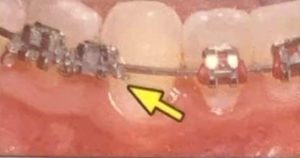
- Loose band: If the band is still attached to the wire, leave it in place. If uncomfortable, cover with wax. If it comes out completely, bring it with you to the next appointment. Do Not Connect Headgear or Elastics to a Loose Band. Call for an appointment to repair a broken/loose band.
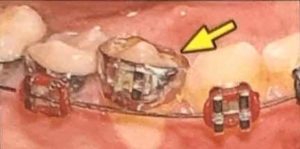
- Lost tie wire or elastic tie: Please call to ask if an appointment is necessary. Notify the assistant at your next appointment.
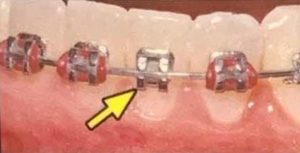
- Wire out of tube: Try to place wire back into tube with tweezers. Place wax if uncomfortable, call for an appointment.

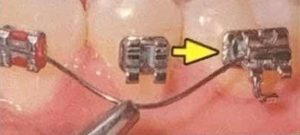
- Rotated archwire: Try to slide wire back around to the other side. If unsuccessful, place wax and call for an appointment.
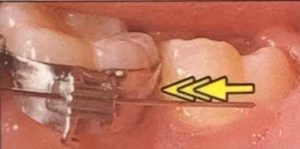
- Poking tie wire: Bend wire back with a spoon or pencil eraser. If unsuccessful, cover with wax and call for an appointment.
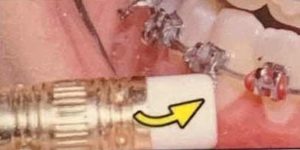
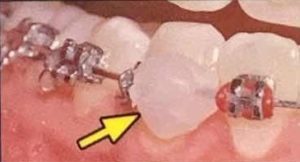
- Poking archwire: Cover with wax or wet cotton. Call for an appointment.

- Accidents involving teeth: Call your dentist or our office immediately!
EXTENSIVE REPAIRS MAY REQUIRE AN APPOINTMENT DURING MORNING HOURS. PLEASE BE CAREFUL WITH YOUR BRACES.
PALATAL EXPANDERS
The palatal expander “expands” (or widens) your upper jaw by putting gentle pressure on your upper molars each time an adjustment is made. Your orthodontist will advise you on when to turn your expander. The animation below will instruct you on how to adjust your expander.
Once the desired expansion is achieved, you will continue to wear the appliance for several months to solidify the expansion and to prevent regression.
- STEP 1: In a well-lit area tip the patient’s head back.
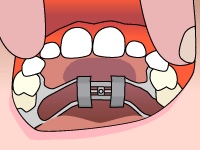
- STEP 2: Place the key in the hole until it is firmly in place.
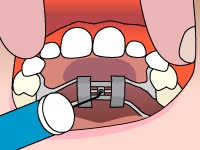
- STEP 3: Push the key toward the back of the mouth. You will notice the fender will rotate and the new hole will appear. The rotation stops when the key meets the back of the expander.

- STEP 4: Push back and down toward the tongue to remove the key. The next hole for insertion of the key should now be visible.

ELASTICS
Sometimes it takes added force to move teeth and jaws into their positions. Elastics, also called rubber bands, have the pull to make that happen! To achieve the healthy, beautiful smile you’re working for, you must carefully follow the orthodontist’s instructions about placing and using your rubber bands.
To get the best results from your rubber bands, remember:
- You are responsible for placing the elastics on your braces every day. Be sure to wear them as instructed.
- Always carry a few rubber bands with you, so if one breaks you can replace it right away. If your supply is low, call our office to get more!
- Rubber bands get tired. When they lose their stretch, they don’t provide the proper pressure on your teeth and jaws. So it’s very important to change them as directed, even when they’re not broken.
RETAINERS
Once braces are removed, a retainer needs to be worn to hold your teeth in place. This prevents teeth from moving back to where they started. Typically, a retainer is worn all the time immediately following treatment, until your orthodontist instructs you otherwise. Then, retainers may be worn nightly or every other night as part of long-term retention.
- Wear It All The Time: At first, you may talk a little funny. This won’t last very long, and you should get better in two to three days. Remember, the more you wear your retainer, the better you’ll sound! Only take your retainer out when playing sports, swimming, or eating.
- Keep It Clean: Clean the retainer thoroughly once a day with a toothbrush and hand soap. Use warm, NOT hot, water. Brushing retainers removes the plaque, and eliminates odors. Efferdent® or other orthodontic appliance cleaners can be used but do not take the place of brushing. If you have a bonded retainer, make sure to brush and floss thoroughly and carefully.
- Handle It With Care: Put it in your case (not a napkin)! You don’t want it to be thrown away. If you do break your retainer, don’t try to fix it yourself! Call our office immediately! Retainers don’t like heat! Avoid hot water and sunlight! And keep it away from pets!
With proper care, your retainer will last a very long time. Your reward will be a lifetime of healthy, beautiful smiles!
HELPFUL TIPS & TRICKS
Contact Us / REQUEST A COMPLIMENTARY EVALUATION
LOCATIONS
WESTFIELD
547 EAST BROAD STREET
WESTFIELD, NJ 07090
Across from the
Westfield Library
LINDEN
401 NORTH WOOD AVE,
LINDEN, NJ 07036
Across from the
Linden Post-Office
CRANFORD
118 NORTH AVE WEST
CRANFORD, NJ 07016
Next to the
Cranford Citgo Station

